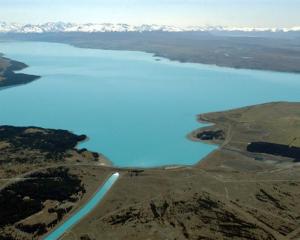Dunedin-based Pacific Edge is on the edge of glory, with its first profit forecast for 2016, Edison Investment Research says in its first research paper on the biotechnology company.
Edison analyst Katherine Genis valued Pacific Edge at $338 million, or $1.16 a share, with shares last trading at 91c for a market capitalisation of $265 million.
The company's main product is Cxbladder, which offers early detection and management of bladder cancer in patients with haematuria (blood in urine), a non-invasive adjunct to cystoscopy. It can replace other urine-based tests to identify more accurately those patients who should receive additional and more invasive testing.
Last week, Pacific Edge managing director David Darling announced a major breakthrough for the company, having patents for colorectal cancer diagnosis approved in Japan.
Ms Genis said Pacific Edge was creating a franchise of products that could be commercialised through the same channels under the Cxbladder banner.
''Now, in the middle of the commercial roll-out of its first product, there is some ambiguity as to the full sales potential of the group, particularly given the complexities and vast size of its target market.
''Our sensitivity analysis suggests a value for Pacific Edge of 46c to $3.91 a share based on the outcomes of two key variables -US average pricing and US market penetration for Cxbladder.''
The company was on its way to realising the commercialisation of its first product in the US after more than a decade of research and product development on five cancers, she said.
Following a $20 million capital raise in October last year, the company had cash and cash equivalents of $20.4 million and no debt at March 31, 2014.
Edison was forecasting positive cash flow in 2017 - without needing to issue new equity - when Pacific Edge was expected to realise its first significant sales.
Current laboratory facilities had the capacity to accommodate the forecast sales through to 2031, Ms Genis said.
Among the sensitivities listed by Edison was the adoption by clinicians. Pacific Edge had successfully passed several milestones on the way to commercialisation in the crucial US market, she said.
''Critical next steps toward wider-spread acceptance of Cxbladder in the US will be the conversion of ongoing user programmes into fee-paying customers and the closing of process with public agencies.''
Negotiations were proceeding with key organisations, including the CMS, the federal agency administering to about 30% of the US population, and some larger private healthcare providers.
Further out, Pacific Edge ran the risk of potential competition from new diagnostics tests, Ms Genis said.
''We do not see a near-term competitive threat to Cxbladder or the Cxbladder portfolio of products. Clinical validation will be critical for new competitive technologies and the long lead time to commercial adoption serves as a high barrier to entry.''
In addition to the US, Pacific Edge was dedicated to the commercialisation of Cxbladder in New Zealand and Australia.
Those markets were measurably smaller, with 300 urologists in both countries together compared with 11,000 in the US. Edison estimated the Cxbladder test market in New Zealand and Australia to be less than 5% of that in the US.












